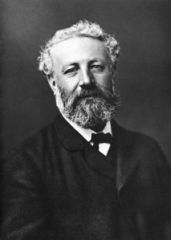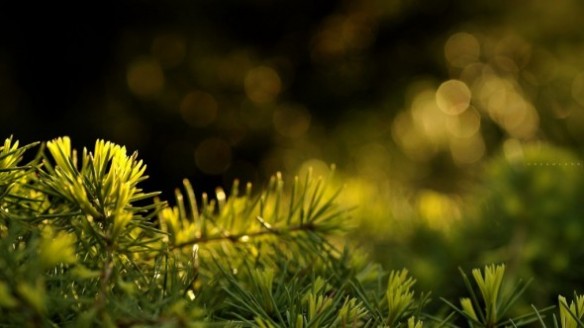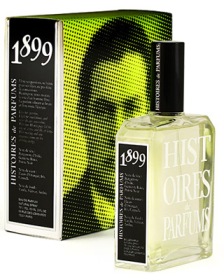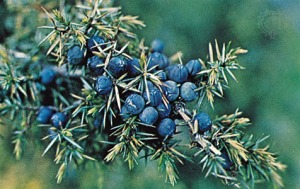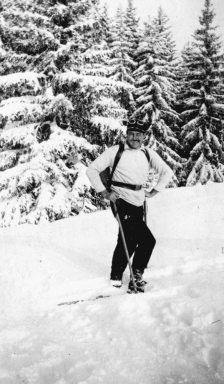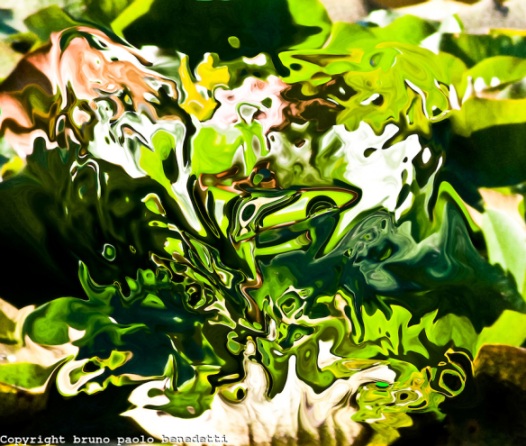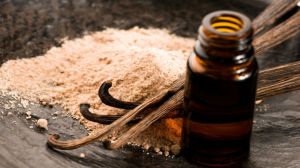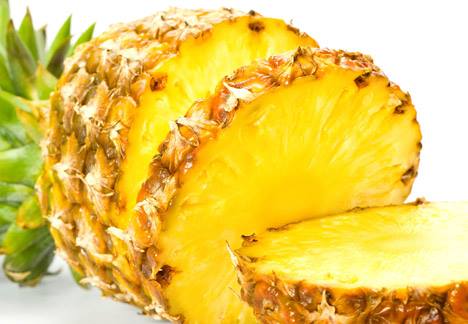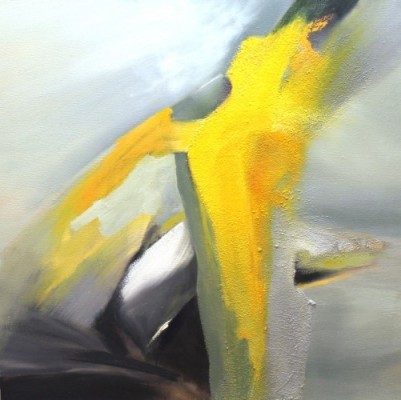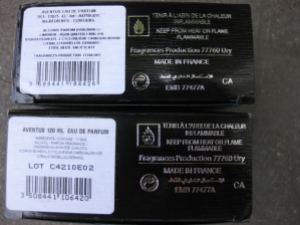Dior is a perfume house that I like quite a bit, and to which I’m bound by the ties of childhood nostalgia. A few weeks ago, I stumbled across the name of a Dior perfume that was wholly new to me, Pondichery, and I sat up in excitement when I read about it. A trip to India through tea, cardamon, jasmine and sandalwood, all done in a refreshing summer manner…. It called to me like the sirens to Odysseus. It didn’t take me long to realise that Dior had a whole, rarely discussed Cruise Collection of eau de toilettes that it had initially released back in 2008 called Les Escales de Dior, and which now numbered four in all: Escale à Pondichéry, Escale à Portofino, Escale à Parati, and Escale aux Marquises. The PR press copy, as quoted by Harrods, explains the collection’s style:
Les Escales de Dior is a Collection of fresh and sophisticated fragrances, inspired by the casual chic style of the Dior Couture Cruise Collection. In each destination that inspires an “Escale”, François Demachy, Dior’s Perfumer-Creator, selects the highest raw materials, exclusive to the Dior House.

Three of the four Escale fragrances. Source: mujerglobal.com
I tend to become a little obsessed with things so, even though I still have quite a few of Dior’s wonderful, Privé Collection to get through, I became determined to get my hands on Les Escales de Dior. (The line is sometimes called The Cruise Collection on places like Fragrantica and Surrender to Chance, but I will go with the name used by Dior itself on its website.) When Dior’s wonderful Karina Lake called me from the Las Vegas boutique with some news about a fragrance, it seemed like the perfect opportunity to beg for samples of the Escale collection.
I’ve been working through them, and they’re generally nice eau de toilettes with some very pretty bits, an uncomplicated nature, and a somewhat commercial bent. There’s nothing wrong with them, especially for their low price and large size, and commercial perfume buyers seem to adore a number of them — but they’re not for me. Given how simple they are, I thought I’d provide a relatively brief synopsis of the four fragrances in a single post, instead of treating each one individually to a lengthy, in-depth review.
ESCALE À PONDICHERY
Escale à Pondichéry (hereinafter referred to simply as “Pondichery“) was released in 2009, and is categorized by Dior as a “green floral citrus.” Dior describes it as:
An olfactive immersion in India. François Demachy was inspired by the black tea extract during his journey in India: a fresh, sophisticated and elegant note. The new fragrance, Escale à Pondichéry, is rich in natural essences coming from the Indian continent, selected by the Dior House for their superior quality: cardamon essence, sandalwood essence and jasmine sambac absolute.

Source: fann.sk
Pondichery opens on my skin with black tea, the juiciest bergamot, and nutty cardamon. The notes combine to create a strong but delicate aroma of tea with lemon that is just barely milky in undertone and lightly spiced with cardamom. It feels crisp, refreshing, juicy, aromatic, and airy, all at once. A subtle hint of white musk stirs in the base, smelling simultaneously clean and a little bit floral. I’m not a fan of white musk, even in subtle doses, but I can see why it was added. It helps accentuate the impression of a breezy, summer cruise. In fact, Pondicherry really evokes the crisp, well-starched, ironed whites of boat or cruise people, or the colonial past of the British in one their warm, Empire territories. Cricketers in India, or colonialists in the West Indies, are as much a fit for the visuals of crisp white as a modern-day cruise.
The tea accord is lovely but, for me, the white musk competes dominates just as much and ruins it all. My skin tends to amplify the synthetic, and I’m not a fan of “fresh, clean” notes, no matter how popular they may be with the general public. For large stretches of time in Pondichery, it’s hard for me to smell much below the tidal wave of white crispness. Whenever I succeed, the tea is quite lovely with its strong undertones of refreshing lemon. About ten minutes into Pondichery’s development, the fragrance turns into a very summery, clean citrus scent with tea and an abstract floral note. Unfortunately, the latter never feels like jasmine, let alone concentrated Jasmine Sambac Absolute. Instead, the note is sharp, slightly chemical in nuance, potent in all the wrong ways, and yet, mutedly restrained in terms of an actual floral character. It is like a hygienically clean, fresh, unnatural jasmine, if you will, reinforced by laboratory-created white musk and infused with something disagreeably synthetic and lemony. (Yes, I have a strong bias against commercial synthetics!)
 Thankfully, Pondichery improves in time, and becomes quite pretty on occasion. After that difficult opening, the fragrance eventually settles into place and loses some of its synthetic and laundry-clean musk overtones. At the end of the second hour, Pondichery is a tea fragrance with slightly milky, lemony undertones, accompanied by fresh floral musk. There are occasional hints of creamy, white woods in the base, but they are abstract and certainly can’t be distinguished as real sandalwood. On occasion, the milky, sweet, creamy tea note is accompanied by something that smells like almonds, but it is subtle. Once in a while, a flicker of warm, lightly spiced nuttiness stirs in Pondichery’s base, but it never feels like cardamom (which has long lost any individual distinctiveness), so it must be that fake, ersatz “sandalwood” synthetic used to replicate the almost extinct Mysore wood. In its drydown stage, Pondichery grows more abstract, amorphous, and hazy, turning into a simple clean, white, musky woodiness.
Thankfully, Pondichery improves in time, and becomes quite pretty on occasion. After that difficult opening, the fragrance eventually settles into place and loses some of its synthetic and laundry-clean musk overtones. At the end of the second hour, Pondichery is a tea fragrance with slightly milky, lemony undertones, accompanied by fresh floral musk. There are occasional hints of creamy, white woods in the base, but they are abstract and certainly can’t be distinguished as real sandalwood. On occasion, the milky, sweet, creamy tea note is accompanied by something that smells like almonds, but it is subtle. Once in a while, a flicker of warm, lightly spiced nuttiness stirs in Pondichery’s base, but it never feels like cardamom (which has long lost any individual distinctiveness), so it must be that fake, ersatz “sandalwood” synthetic used to replicate the almost extinct Mysore wood. In its drydown stage, Pondichery grows more abstract, amorphous, and hazy, turning into a simple clean, white, musky woodiness.
All in all, Pondichery lasted just short of 10.75 hours on my skin, which might be surprising for an eau de toilette, except my skin hangs onto white musk like the damn plague. For the same reason, Pondichery had moderate projection for as long as the first 6 hours, wafting a few inches above the skin, before it turned into a discrete skin scent. On Fragrantica, the majority of voters found Pondichery’s longevity to be “moderate,” and its sillage to be “soft,” followed by “moderate” as the next choice.
Pondichery seems to be an extremely popular summer fragrance, with Fragrantica commentators loving its tea notes, its refreshing citrus tones, and the depth added by its subtle woody base. Men like it as much as women, so it’s quite unisex in its appeal. On the Nordstrom site, buyers positively rave about how wonderfully fresh, light, and beautiful Pondichery is, and the number of times the word “fresh” is used in a positive manner underscores to me one more time just how much the casual perfume buyer loves clean, white musk in commercial perfumery. If that is your taste, you should absolutely check out Pondichery. It’s versatile, affordable, and easy to wear. Parts of it are quite pretty, and I can see why the tea accord appeals to so many people.
ESCALE À PORTOFINO

Source: goldparfumer.ru
Escale à Portofino (hereinafter just simply “Portofino“) was the very first Escale fragrance. It was launched in 2008, and is described by Dior as an “aromatic citrus” that is an “invigorating burst of sweet freshness.” The notes, according to Fragrantica, are as follows:
Top notes are bergamot, petitgrain and lemon; middle notes are almond, orange blossom and juniper berries; base notes are cedar, cypress, galbanum, caraway and musk.
Portofino opens on my skin with every possible part of a citrus tree: neroli with its bitter, spicy greenness, followed by regular, feminine, sweet orange blossoms; crisp, aromatic lemon; juicy, sun-ripened bergamot; and quiet hints of the woody twigs from the petitgrain. There are subtle flickers in the base that almost seem like sharp galbanum and something mossy. There are muted whispers of cedar lurking below, as well, accompanied by white musk. I don’t detect any almonds, nor cypress with its slightly piney characteristics.
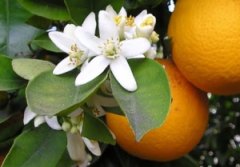
Orange blossoms via the Pattersonfoundation.org.
The whole thing is a very clean, refreshing, bright, summery, aromatic citrus that feels like an eau de cologne, though it initially has the strength and richness of an eau de toilette. At the end of the first hour, Portofino becomes simpler and hazier, devolving into a neroli and orange blossom fragrance with soft white musk. At the 90-minute mark, Portofino turns into a complete skin scent. There are fluctuating levels of orange blossom and white musk, but no woodiness and no almonds. It remains that way to the end when, in its final moments, Portofino dies away merely as a clean citrus musk. All in all, the fragrance lasted just short of 6 hours on my skin, and I seem to be one of the lucky ones.
On Fragrantica, most people seem to love Portofino, though there are a complaints about the fragrance’s weak longevity and projection. Some people found Portofino to be far “too citrusy,” a few thought it smelled artificially synthetic in its lemony nature, and seven people complained that it smelled like lemony dishwashing liquid or lemon furniture cleaner. (Actually, I stopped counting after the 7th one, as there are a lot of reviews for Portofino on the site.) A large number of people (28) compared Portofino to an old eau de cologne dating back to 1792: 4711 Original Eau de Cologne by Maurer & Wirtz. I haven’t tried the fragrance to know how it similar it is, but Portofino with its orange blossoms seems much warmer to me than a pure cologne with its brisker, crisper, thinner nature. Still, as a whole, the majority of Fragrantica commentators spoke positively and appreciatively about how Portofino was “refreshing,” “light,” “chilly,” “elegant,” “luxurious,” and/or perfect for summer. The word “fresh” was used repeatedly, as well. Again, it’s not my thing, but if that’s your style, you may want to consider giving Portofino a sniff.
ESCALE À PARATI

Source: cosmetics-parfum.com
Escale à Parati (hereinafter just “Parati“) is an eau de toilette that was released in 2012. Fragrantica explains the perfume’s name, its inspiration, and its notes:
Parati (or Paraty) is historical and touristic town in Brazil, situated on the Green Coast (Costa Verde) near Rio de Janeiro.
Francois Demachy, the Dior in-house perfumer, found the inspiration for this fragrance in vivid and pastel colors of the landscape, laughter, wind, music, samba and sea. The fragrance captures Brazilian exotics with citrus and woody notes of bitter orange, lemon, petit grain, rosewood, mint, cinnamon, red berries and tonka bean.

Source: my-parfum.net.ua
Parati opens on my skin with lemons and oranges. It’s juicy, fresh, bright, and light, and seems well-suited to summer. Quickly, the citrus bouquet is followed by warm, sweet woodiness, and hints of mint. There is something a little synthetic in feel in the basenotes, but it’s minor. Quiet whispers of slightly bitter, woody, petitgrain twigs lurk about, but they never detract from the overall cool and fresh nature of the fragrance.

Blood Orange. Source: Twitter.
In less than ten minutes, however, Parati turns warmer and creamy in feel. The tonka bean adds a soft sweetness, though it doesn’t reflects a vanilla characteristic at this stage. Now, Parati is a creamy citrus fragrance dominated by a blood orange tonality, and accompanied by cinnamon and soft, muted rosewood. Around the 90-minute mark, the fragrance starts to gain more vanillic overturns, turning into a creamy, orange scent with soft woods and a subtle dusting of cinnamon, all cocooned in a warm, custardy vanilla. Parati remains that way largely towards its end, turning more abstract, hazy and soft until it is merely a trace of sweet vanillic woodiness. All in all, Parati lasted just over 4.5 hours on me, with soft, discreet sillage throughout.
On Fragrantica, people seem to have experienced a substantially more citrusy fragrance than I did. In fact, a number of commentators compare Parati to a cologne with its dominant, simple, citric blast. A handful mention the cinnamon and Parati’s warm woodiness, but they’re not many. As a whole, there doesn’t seem to be as much enthusiasm for Parati as there is for the rest of Dior’s Escale fragrances, but the scent is only a year old while others, like Portofino, have been around for quite a while now. I liked parts of Parati because its warmer, slightly sweeter nature didn’t feel as “fresh and clean” to me as some of the other crisp, light, citric scents, but it’s clearly a matter of personal taste.
ESCALE AUX MARQUISES

Source: Marieclaire.it
Escale Aux Marquises (hereinafter just “Marquises“) was launched in 2010, and is a warm, floral citrus eau de toilette. Fragrantica lists its notes as follows:
blood orange, pink pepper, cardamom, pepper, cinnamon, ginger, clove, nutmeg, coriander, elemi resin, benzoin, amalfi lemon and tiare flower.

Source: rmwebed.com.au
Tiaré is a large component of the scent, so it may be helpful to briefly discuss its aroma. The flower is a tropical, Tahitian kind of gardenia whose scent is often associated with suntan lotion due to its use in Monoi-type of products. It has a creamy, rich aromaa that can sometimes feel like coconut or custardy vanilla, but which isn’t actually much like either. It’s a very lush, indolic, heady scent, and it lies at the heart of Marquises.
 The Dior fragrance opens on my skin with bright, juicy, slightly tart blood orange. There are hints of pink peppercorn, but Marquises is quickly infused by a heady blast of creamy, lush tiaré. The overall effect is to turn Marquises into something that distinctly resembles an exotic, orange-vanilla popsicle. Soon after, lovely whiffs of fresh, slightly spicy ginger follow, along with cloves, cardamon, and bitter nutmeg. Subtle tinges of lemon and fruity pink pepper berries lurk underneath.
The Dior fragrance opens on my skin with bright, juicy, slightly tart blood orange. There are hints of pink peppercorn, but Marquises is quickly infused by a heady blast of creamy, lush tiaré. The overall effect is to turn Marquises into something that distinctly resembles an exotic, orange-vanilla popsicle. Soon after, lovely whiffs of fresh, slightly spicy ginger follow, along with cloves, cardamon, and bitter nutmeg. Subtle tinges of lemon and fruity pink pepper berries lurk underneath.

Nutmeg. Source: Kootation.com
The spices, however, are quite prominent and, within minutes, I’ve gone from smelling like an orange popsicle to some sort of spiced butter cookie. It’s the result of the tiaré’s very buttery undertones, combined with the nutmeg in particular. Behind the sweet, spicy, buttery, slightly vanillic warmth are bursts of juicy, tart, fresh citruses, though they sometimes feel like a Jack in the Box, popping up only occasionally and in varying strengths. On my skin, Marquises is never a full-on, predominantly citric scent, and is much more about the tiaré and spices.
Ten minutes in, Marquises is creamy, tropical, lush, sweet, very heady and slightly indolic, with buttery vanilla sweetness, loads of dusky spices, and a slight undertone of citric freshness. Ginger adds a quiet zing, especially in conjunction with the blood orange, while the nutmeg adds a slightly bitter edge that helps cut through some of the heady, unctuous richness. Sometimes the scent feels quite floral, but I’m still struck by the occasional impression that I smell like a shortbread butter cookie sprinkled with nutmeg. It’s not bad at all, especially as Marquises has enough dryness, spice and citruses to keep the scent from feeling gourmand in any way. The whole thing is very airy, bright, and heady.
Thirty minutes in, Marquises shifts a little. There is suddenly a quiet woodiness that stirs in the base and, surprisingly, it has quite a smoky aroma. It smells a little acrid, a bit sharp, and reminds me of the scent of burning leaves in the fall. It comes from the elemi, and it feels a little disconcerting in the midst of all the Tahitian floral creaminess mixed in with butter cookie and orange popsicle accords. Then again, I suppose those last three things are an unusual combination, in and of themselves.
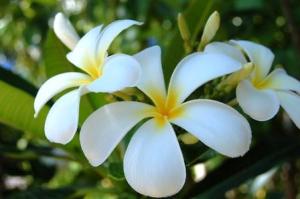
Source: Kootation.com
At the 90-minute mark, Marquises settles into its main, final bouquet: tiaré backed by strong hints of blood orange (that has a slightly neroli and orange blossom undertone), with subtle spices and woodiness, all flecked by a vanilla creaminess. It’s a soft blur of muted notes that all overlap each other, never feeling individually distinct. Marquises hugs the skin as a discreet whisper, turning increasingly soft until it’s nothing more than a sweet, vaguely creamy floral citrus scent with some amorphous woodiness. All in all, it lasted just over 3.75 hours, which is pretty much in line with many reports on Fragrantica, though one poor soul said Marquises died after a mere 30 minutes.
Marquises seems hugely adored by those who have tried it on Fragrantica, many of whom call it “beautiful.” For a few people, it’s actually their favorite from the Escale collection. As a whole, commentators find it citrusy, fresh, and elegant, though some find the spices to dominate, and a rare few think the fragrance smells masculine. Judging by the votes, the main notes that people have experienced are: tiaré (54), blood orange (52), and lemon (51), followed by ginger (43), nutmeg (41), and cardamon (41). The common complaint, however, is that Marquises barely lasts on the skin. Yet, some people find the scent to be lovely and luxurious enough to warrant re-application during the day, and Dior certainly sells Marquises in a generous size at a decent enough price for that to be an option. (The smallest bottle is 75 ml/ 2.5 oz in size and costs $75, £56.00, and about €67,90.) I thought the scent was quite pretty at times, and it never felt very synthetic, so if you’re looking for a warm, airy citrus fragrance with a bit of a quirk, then Marquises may be right up your alley.
ALL IN ALL:
I liked small bits in each of the Dior fragrances, and thought they were generally pretty on occasion. None of them are revolutionary, original, edgy, complex, nuanced, or of luxurious depth, but I don’t think a commercial, summery Cruise line of fresh, citrusy eau de toilettes is meant to be. That said, neither light, crisp citruses nor fragrances that scream “fresh and clean” are to my personal taste, especially when white musk is involved. However, the commercial mass-market taste is for precisely such fragrances, so the Escale collection is aimed at a specific target audience.
For those who appreciate such scents, the Dior eau de toilettes seem ideal, especially for summer. They’re light, easy to wear, versatile, unisex, and affordable (especially given how the “small” Dior size is almost an ounce more than the starting size of most brands). Les Escales may have iffy longevity, depending on the particular fragrance in question and on your personal skin chemistry, but eau de toilettes have moderate longevity in general. As for sillage, the Dior style is for very discreet, soft fragrances as a whole — something which makes them ideal for anyone concerned about wearing fragrances to work, or those who prefer merely a subtle suggestion of scent. All in all, they are well-suited to a particular perfume style and taste.
DETAILS:
Cost & Availability: The Escale fragrances are all eau de toilette in concentration, and are available at Dior boutiques, at Dior online, and select department stores. The fragrances generally come in two sizes: a 75 ml/ 2.5 oz bottle which costs $75, £56.00, and about €67,90; and a 4.25 fl oz/125 ml which costs $98 or €91. (There is a massive 200 ml bottle as well, but I can’t find pricing on that and few places seem to carry it online.) In the U.S.: the Escale line of fragrances can be found at select department stores, Dior’s NYC boutique, and at the main Las Vegas store [(702) 369-6072]. If you’re really interested, however, what I would do is to call this number instead — (702) 734-1102 — and ask for Karina Lake, the Dior Beauty Stylist at the Las Vegas store. She is an amazingly sweet lady who will also give you free Dior perfume samples, free shipping, and you’ll pay no tax! Tell her Kafka sent you. (I get nothing for recommending her, by the way. I merely think she’s wonderful, and I’ve bought from her myself.) Elsewhere, you can find the full Escale line at Macy’s (though I don’t know how many of the stores carry the fragrances in-house), and two of the fragrances (Pondichery and Portofino) are also available at Nordstrom. A friend in San Francisco informed me that he had difficulty finding the Cruise Collection in department stores, and located them actually at Disneyland, so not every Nordstrom or Macy’s may have them. As a side note, a large 4.2 oz tester bottle of Pontichery is on sale at FragranceNet for $66.46 with a coupon. The others may be similarly discounted on that site, so you may want to check. Outside of the US: In the UK, you can find the Escale Collection at Harrods where prices start at £56.00. In France, you can find the Escale line at French Sephora which sells the 75 ml bottles for €67,90 and the larger 125 ml bottles for €96,90. The link will take you to the Pondicherry entry, but you can find the other fragrances from the Escale link shown midway down on the page. In addition, you can use the Points of Sale page on the Dior website to find a location for a store near you.
Samples: If you want to give any of the Escale fragrances a sniff, samples are available at Surrender to Chance where prices start at $2.99 for a 1 ml vial.
 One commentator, “Alfarom,” found 1828 Jules Verne to be extremely similar to Gucci Envy for Men:
One commentator, “Alfarom,” found 1828 Jules Verne to be extremely similar to Gucci Envy for Men:
